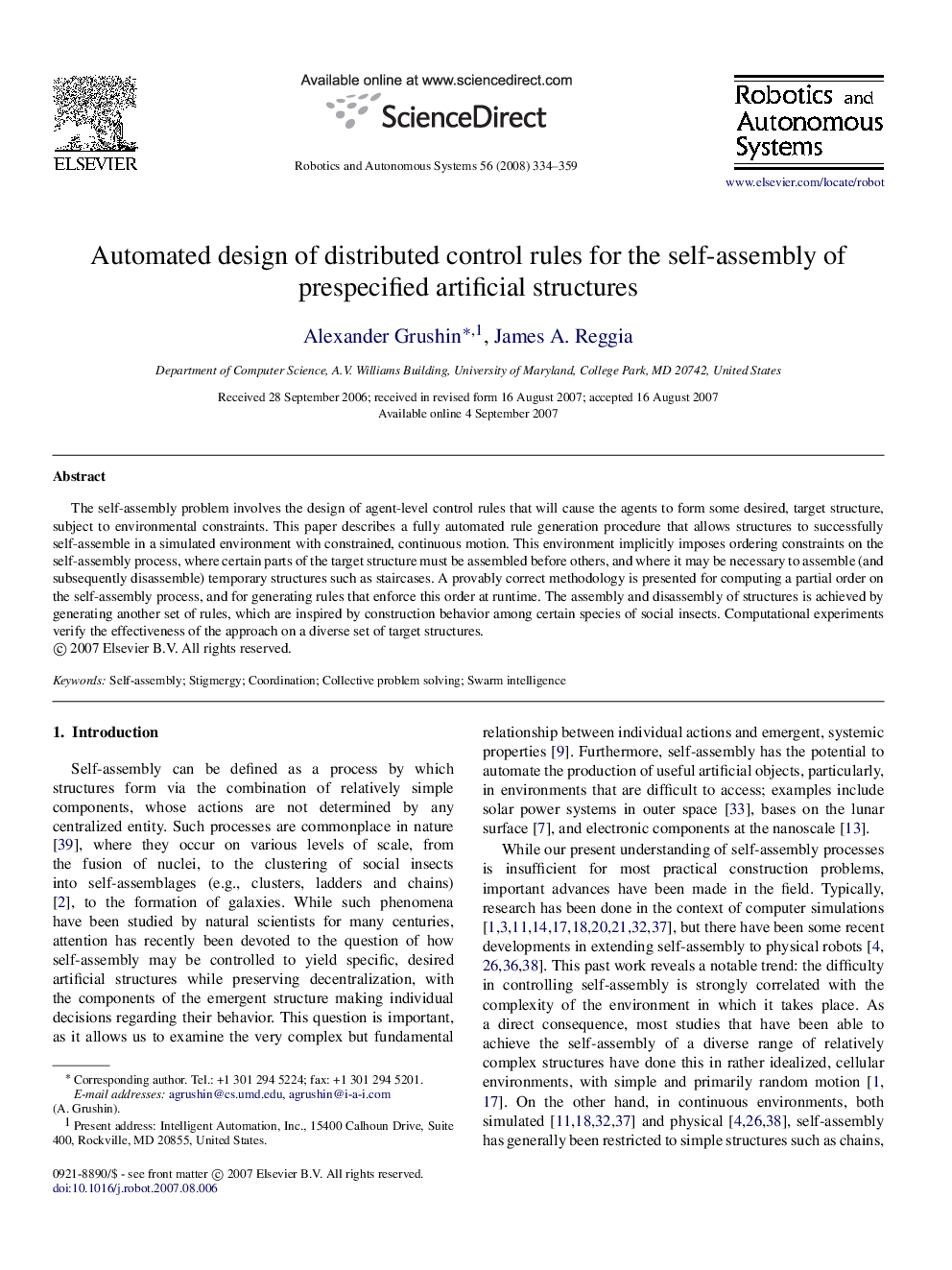| Article ID | Journal | Published Year | Pages | File Type |
|---|---|---|---|---|
| 412572 | Robotics and Autonomous Systems | 2008 | 26 Pages |
The self-assembly problem involves the design of agent-level control rules that will cause the agents to form some desired, target structure, subject to environmental constraints. This paper describes a fully automated rule generation procedure that allows structures to successfully self-assemble in a simulated environment with constrained, continuous motion. This environment implicitly imposes ordering constraints on the self-assembly process, where certain parts of the target structure must be assembled before others, and where it may be necessary to assemble (and subsequently disassemble) temporary structures such as staircases. A provably correct methodology is presented for computing a partial order on the self-assembly process, and for generating rules that enforce this order at runtime. The assembly and disassembly of structures is achieved by generating another set of rules, which are inspired by construction behavior among certain species of social insects. Computational experiments verify the effectiveness of the approach on a diverse set of target structures.
